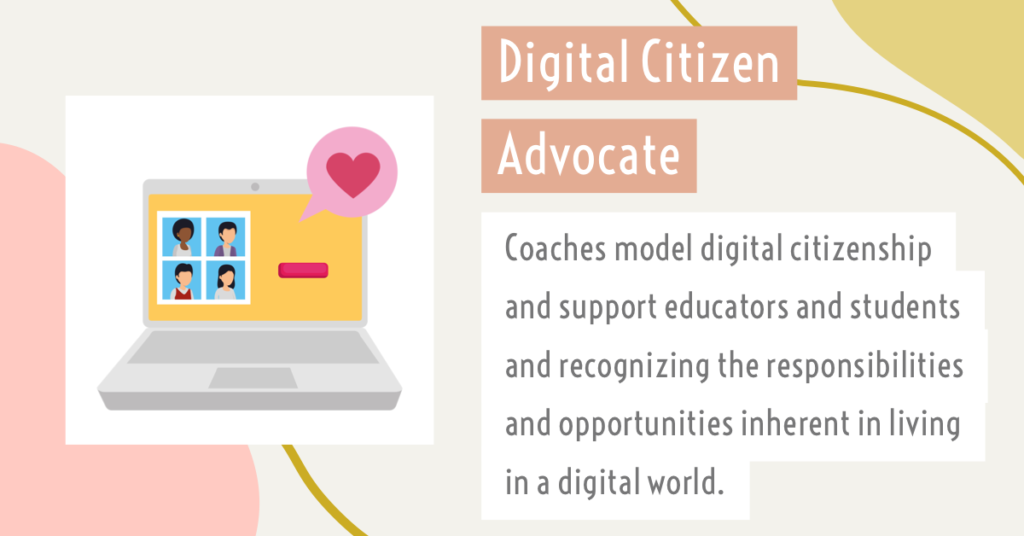7a

Coaches can help inspire and encourage others to leverage technology to change their world. Several years ago I collaborated with teachers to create our 4th Grade Community Fair. Our goal was to educate our students about community needs and show them that even 4th graders can make a difference. We invited local organizations to come share about issues such as homelessness, food insecurity, disease, wildlife conservation, etc. Students chose a group to advocate for and did more research on the issue. They used technology to connect with experts and produced creative multimedia presentations. Student projects included green screen videos, website design, video creation, infographics, and podcasts just to name a few. Our unit culminated with our Community Fair where students presented to a live audience of parents, administration, and community members. Today I can continue to empower students to make a difference in their communities by using technology to network and collaborate with people from around the world. In my blog post, How to Harness the Power of Global Collaboration, I outline ways to get connected globally and tools students can use to collaborate.
Another way educators can help inspire and encourage students to use technology for civic engagement and to solve challenges is to introduce them to STEM. The acronym stands for Science, Technology, Engineering, and Math. STEM instruction is a unique approach to learning that allows students to work through a design process to creatively solve a problem. STEM challenges can be used in any subject and require students to collaborate, communicate, create, and use critical thinking skills. When we give our students the time and space to think through problems and come up with creative solutions we are helping foster adults who will be open-minded, flexible, self-directed problem solvers who can make a difference in their own communities and in the world (McLaughlin, 2017). If you want to learn more about STEM and how to incorporate it into your classroom check out my blog post: Using STEM to Encourage Innovative Designers. Several years ago the school I was at decided to adopt the Code.org curriculum K-5 to help equip our students with basic coding skills and work on computational thinking. As the digital learning coach on campus, I supported staff as they began to learn more about coding and computational thinking by co-teaching lessons and collaborating on performance tasks that utilized computer science skills. Then I had the idea to plan and lead a school-wide STEM challenge that focused on coding. I believed that the STEM challenge would 1. support our teachers in trying out more STEM-related content in their classrooms, 2. expose our students to STEM and cultivate a curiosity to pursue STEM studies and careers. and 3. unite our school and showcase the cool things we are doing with the technology. Grade levels had different age-appropriate challenges, but all were centered around de-bugging algorithms. If you’re interested in learning more about our school-wide STEM challenge check this blog post, or peruse the unit below.
UBD_STEM-Challenge_DebuggingTo read more about my work with this standard, you can use the drop-down menu above or the buttons below to navigate to a specific performance indicator.
Works Cited
ISTE Standards for Coaches (n.d.). Retrieved from: https://www.iste.org/standards/for-coaches
